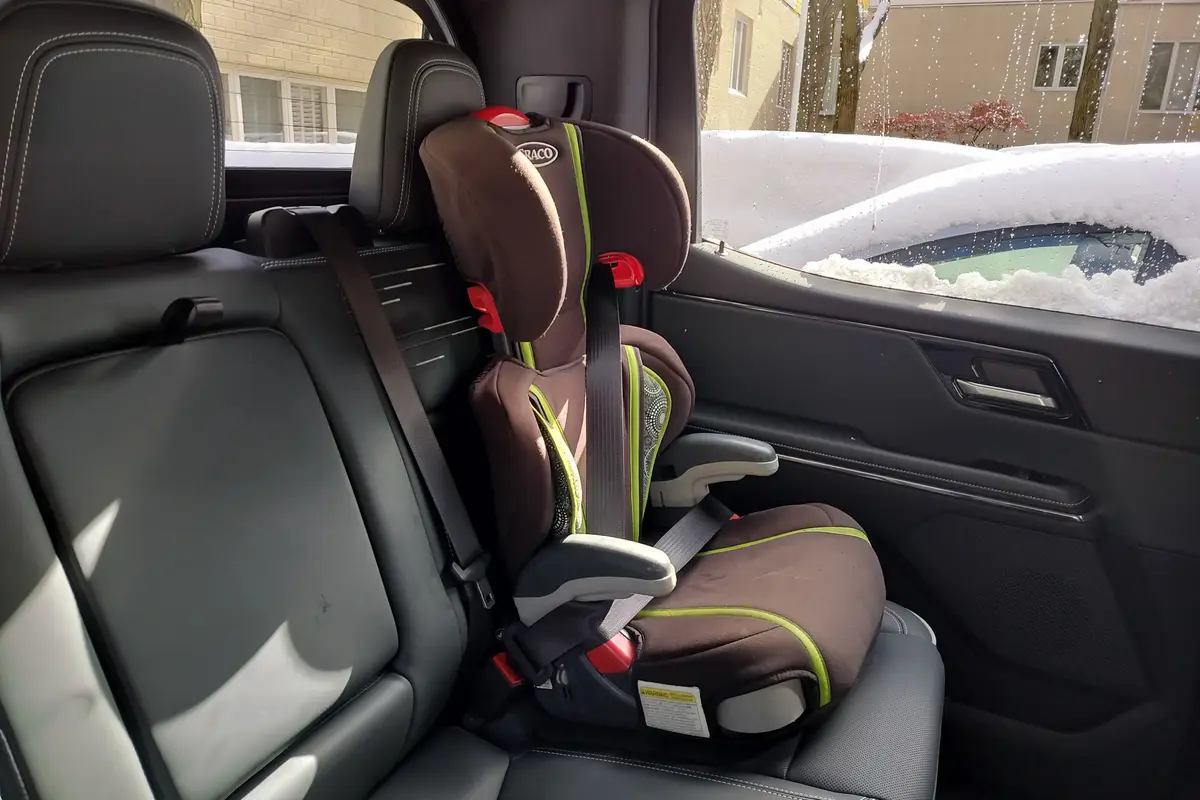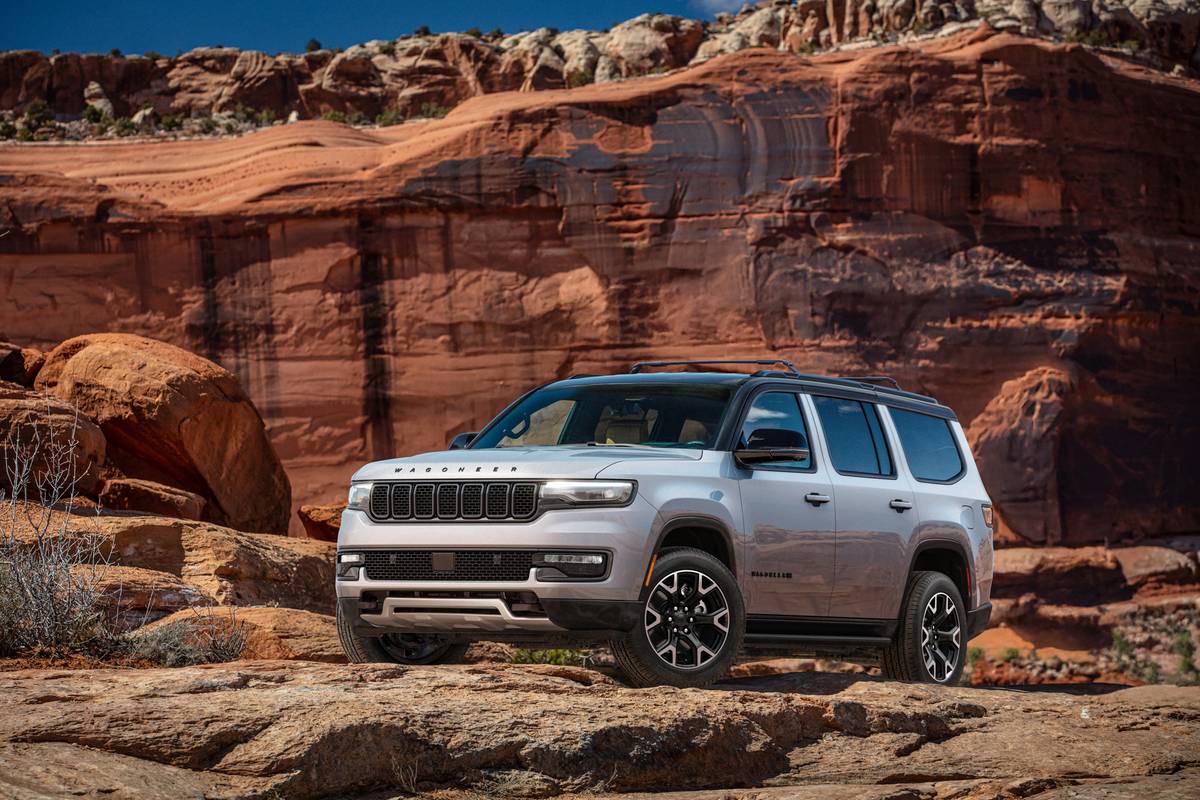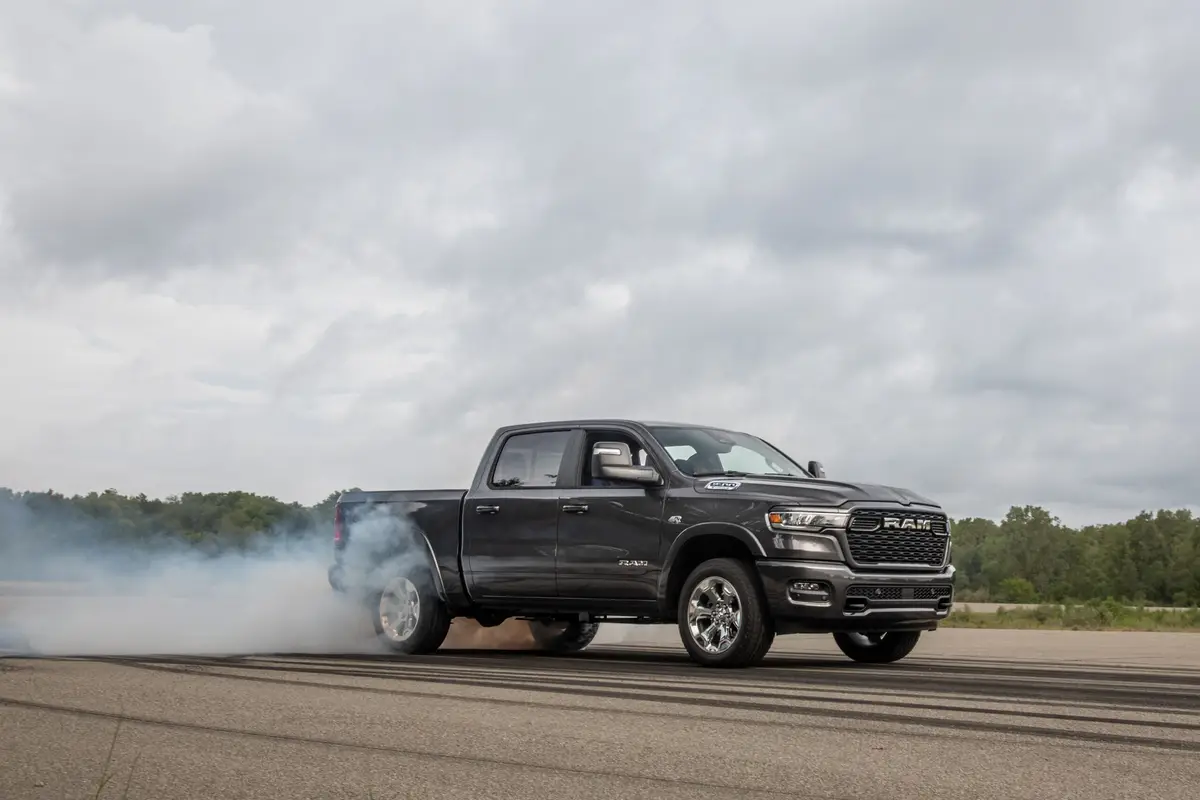Cincinnati.com's view
I thought one of the most promising vehicles I tested in the last decade of the last millennium was a Toyota Camry station wagon. Shows what I know; it bombed. As did a comparable offering from Honda. Both were sleek, comfortable, well-built and handled much like their sedan counterparts while offering greatly enhanced carrying ability. But this is the car biz, and logic generally takes a back seat to psychology. There’s just no underestimating the antipathy that a majority of today’s car buyers have to anything stigmatized with the name wagon. (I think Chevy Chase’s Summer Vacation movie had a lot to do with it.)
So, as we’ve seen before, we have a whole new breed of vehicles tricked out in sport-utility guise which are, in their very souls, the station wagons of the X and Y generations. On the whole, this evolution has not been a bad thing; these new “crossover” rides often have some kind of all-wheel-drive mechanism available and, being tall, in their SUV-simulating way, they carry even more than the wagons of yore. Conversely, being tall, they are somewhat more prone to rollovers than vehicles whose center of gravity is closer to the ground, and they are much worse aerodynamically, which costs some fuel.
Presenting the Highlander, just now arriving in Toyota dealerships. Toyota already had an impressive array of SUV-type vehicles — Land Cruiser, Sequoia, 4Runner, RAV4 — but those, with the exception of the pocket-sized RAV, are more serious off-roading machines, with drivetrains and chassis ready to take on the woods. Highlander is derived from the Camry platform, and thus bears a great similarity to the corresponding offering from Toyota’s luxury division, the Lexus RX 300, although it can be argued that Highlander is a considerably better choice — aesthetics aside — than the more expensive machine, which is due for a redo soon anyway.
Presenting the Highlander, just now arriving in Toyota dealerships. Toyota already had an impressive array of SUV-type vehicles — Land Cruiser, Sequoia, 4Runner, RAV4 — but those, with the exception of the pocket-sized RAV, are more serious off-roading machines, with drivetrains and chassis ready to take on the woods. Highlander is derived from the Camry platform, and thus bears a great similarity to the corresponding offering from Toyota’s luxury division, the Lexus RX 300, although it can be argued that Highlander is a considerably better choice — aesthetics aside — than the more expensive machine, which is due for a redo soon anyway. Highlander is built in the same plant in Japan that cranks out RX 300s. But it has about four inches more in both wheelbase and overall length than the Lexus, being closer to the 4Runner’s exterior dimensions. It has a bountiful 5.5 inches more width than the 4Runner, which should go a long way toward eliminating the cramped feeling I had in that one. The numbers also argue for a better ride and enhanced stability. Highlander uses the extra length to provide greater hauling ability. Its cargo area is 81 cubic feet with the second-row seats folded flat, about half that with them upright. This compares with the 72 cubic feet afforded by plausible competitor, Jeep Grand Cherokee, which, to give further perspective, is 3 inches shorter overall.
Highlander doesn’t work so hard at looking expensive as the Lexus does, but I found its clean lines — with just a tad of styling fancies — refreshing. Since Highlanders come in by boat, Toyota saves itself some headaches by limiting them to but one series, well equipped. There is of course a plethora of jazzing up that can be effected at the port of entry and/or the dealer’s, including even the execrable gold package.
The major decisions to be made concern drivetrain. Highlander can be had with a four-cylinder or six-cylinder engine, front-wheel drive or all-wheel drive. Cheapest point of etry is 2WD with the four-banger, of course. That bears a sug ted price of just a hair under $24,000, including freight. At the other end of the spectrum, the V-6 AWD machine is about $3,000 more.
Even in its most austere form, as tested here, Highlander comes with air conditioning, four-speed automatic transmission, six-speaker AM-FM-CD-cassette stereo, tilt wheel, cruise control, power windows, steering, brakes and locks, antilock and 16-inch wheels, all of which make it a compelling alternative to a sedan. With the minimum equipment, a Highlander weighs nearly 3,700 pounds. This argues against the 155-hp four-cylinder engine, unless you never have to get anywhere (like onto a freeway) quickly, although my subjective impression was that it seemed peppy enough with only me as ballast.
The six is the all-around better choice, even if you opt for the front-wheel-drive configuration. The three-liter V-6 is the same one used in the Lexus. With 24 valves, variably timed, it makes 220 horses and 222 foot-pounds of torque. That’s quite a jump from the four and likely worth it in driver satisfaction — no argument whatsoever if you’re going to tow, and you can allegedly do as much as 3,500 pounds’ worth of that with the V-6/FWD number and the trailering add-ons.
Being about 5 feet 8 inches tall, the sample machine was no monster truck, but rather, easy to enter and still afforded a disdainful view of mere coupes and sedans. There was plenty of space for driver and navigator — thanks in part to the absence of a console, which some may find a detriment — and a surprising amount of wiggle room in second class, though three adults would feel quite cozy. No third row is available, but that’s a smoke-and-mirrors act in a compact SUV anyway.
Highlander, like its Camry progenitor, is of unibody construction, rather than body-on-frame, like truck-based SUVs. It felt tight and satisfyingly rigid. The suspension is independent front and rear, using MacPherson struts at both ends to enhance ride and roadholding ability. The Highlander was well-behaved even over pavement no better than it ought to be. The ride — by design, I suppose — was quite a bit firmer than what you get from a Camry. In part I imagine this is to maintain the SUV illusion (and a salutary reminder not to attempt Camry-style cornering). It may also be a consequence of imposing a light load on a vehicle designed for big ones inside and behind.
The automatic transmission was not one of Toyota’s finest efforts. Under light throttle, it shifted quickly and smoothly. But it was a bit harsh under full-power urging, and did its best to resist commands from the bridge to grab a lower gear. There was minimal torque squirm when I hit the front, driving wheels with a sudden rush of power, although it was possible to ask more than the tires could deliver. The optional traction control can take care of that, and the 4WD version can even be fitted with a sophisticated anti-skid system.
Steering was light and fast , and I had a good sense of what was going on at the rubber-macadam interface. The tires were 225/70/16s, an appropriate choice, given the mission. The brakes are discs fore and aft, ventilated in front, solid at the rear. Antilock is standard, and 2WD machines also have “Brake Assist.” This is a scheme Mercedes uses, too, to very good effect. Essentially it detects a faster-than-normal application of pedal pressure and applies the brakes in a non-linear fashion. It seemed to work quite well in concert with the silky antilock. The soft pedal feel, however, was unnerving at first and I never really did get used to it, although stopping distances were impressively short.
Neither Feds nor Insurance Institute has crashed a Highlander yet. Base price on the 2WD Highlander with I-4 is $23,515. Freight is $480. A lot of dealers will be ordering more indulgent versions, I suspect. The otions list is extensive. You could push the price toward $30K with the addition of such things a h luxury package for $3,495 that gets you wood and leather in abundance, along with some minor appearance and functional upgrades; power moonroof, $815; heated front seats, $440; alloy wheels, $500; front side air bags, $250; premium audio system, $595, and so on.
“The Gannett News Service”
Latest news



